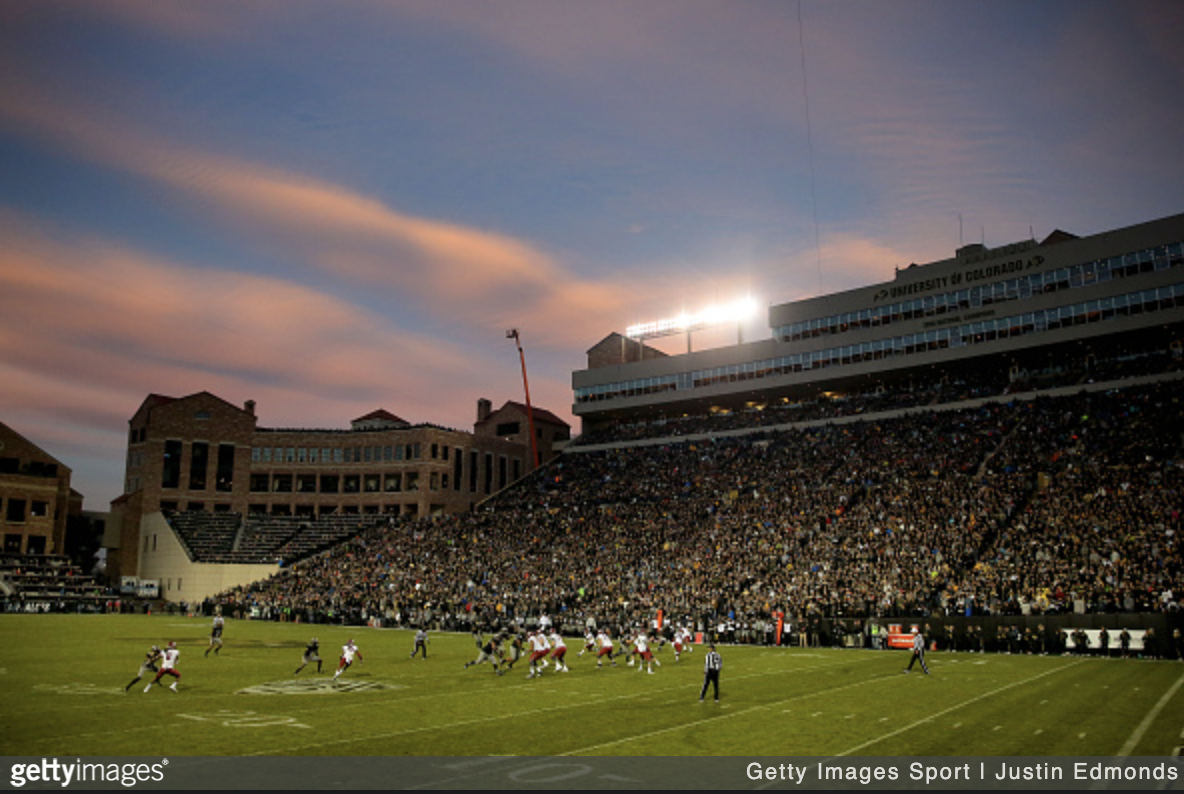© 2024 ALLCITY Network Inc.
All rights reserved.

The 2014 Colorado Buffaloes lost their final eight games, several in heartbreaking fashion, en route to the program’s third ten-loss season in four years. CU supporters were forced to look for hope in the fact that the team was losing games in the final seconds (and twice in overtime) as opposed to the obliterations of previous years. Hope also came in the form of the construction cranes that loomed over the northeast corner of Folsom Field that season. The long-promised new athletic building, complete with an indoor practice facility, was finally coming.
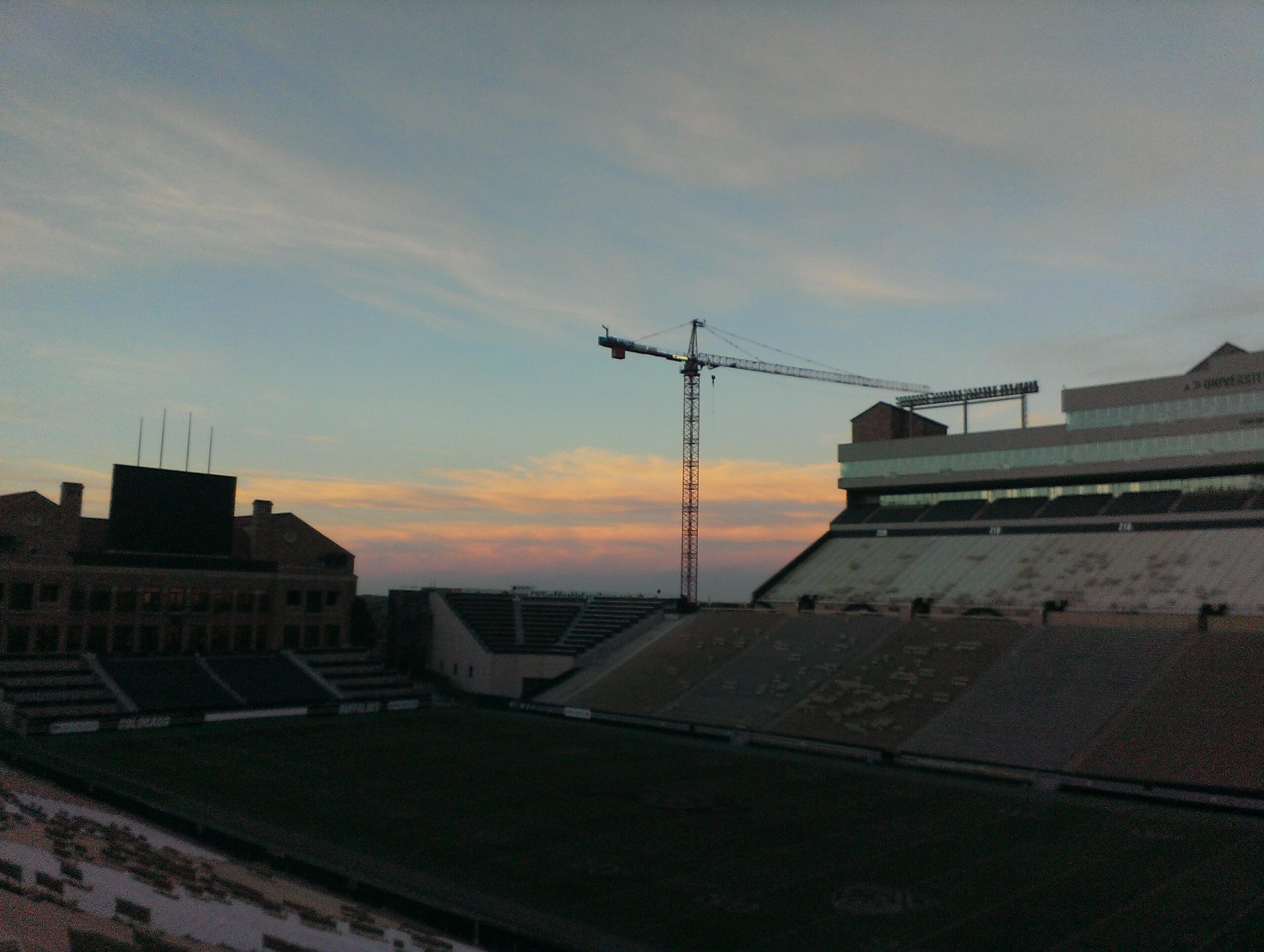
The man responsible for raising the funds necessary to build the $156 million complex was new CU Athletic Director Rick George. A former recruiting coordinator during the McCartney era, George left the Texas Rangers front office to take the big job at CU. His task was to convince donors to pony up the funds necessary to build something in Boulder that would be on the same level as the best facilities in the country. He succeeded.
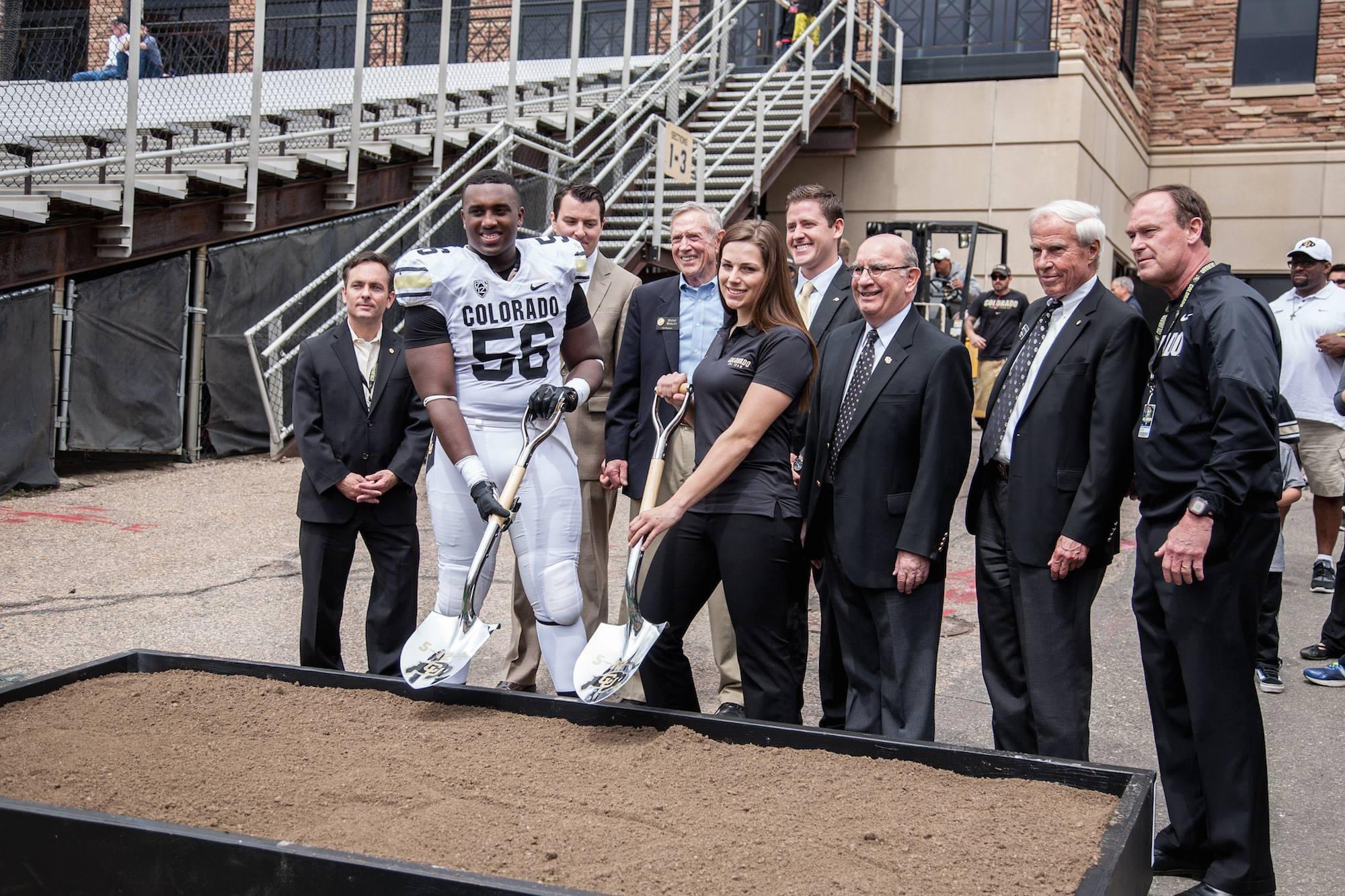
Construction began on May 12, 2014. By the start of the season four months later, the north end zone bleachers in front of the Dal Ward Center had been replaced by new club seating, as had the final section-and-a-half of the east sideline. The result was a capacity reduction of nearly 3,500. Folsom now officially holds 50,183 – the lowest total since 1971. Despite the drop in raw numbers, the huge new six storey structure that took shape over the following year had the effect of making Folsom feel larger and grander than before. By August of 2015, the football offices and locker room were ready for the team to move in.
Dubbed the Champions Center, CU’s new digs did indeed house the 1990 national championship trophy, but the hope was that they would help attract the talent needed to make the Buffs champions again. If a recruit didn’t want to come to Boulder, facilities would no longer be the reason why.
By now you’re likely familiar with the huge weight room, impressive team meeting room, futuristic hydrotherapy pools, and cavernous locker room. It’s difficult to express how revolutionary these were when they were first revealed eight years ago. I remembered seeing new facilities at places like Oregon and shaking my head, feeling like CU would never be able to have something on that level. It was a surreal moment when I actually walked through the place for the first time in the spring of 2016. Rick George himself was gracious enough to give CU’s student section leaders (including myself) a behind-the-scenes tour of the whole place. He was like a proud father as he showed us room after jaw-dropping room.
In addition to the gaudy football facilities, the Champions Center is also home to the offices for most of the other athletic department staff and coaches, except for the basketball teams which have their own offices closer to the CU Events Center. It also boasts an advanced sports medicine facility that is open, by appointment, to the general public.
On the outside, the effect of the new addition on Folsom Field was dramatic. Designed by Populous, the firm responsible for Coors Field and most other beautiful modern ballparks, the Champions Center looks right at home next to Dal Ward. Built in “Tuscan Vernacular”, CU’s signature campus style, it almost looks like it’s been there the whole time.
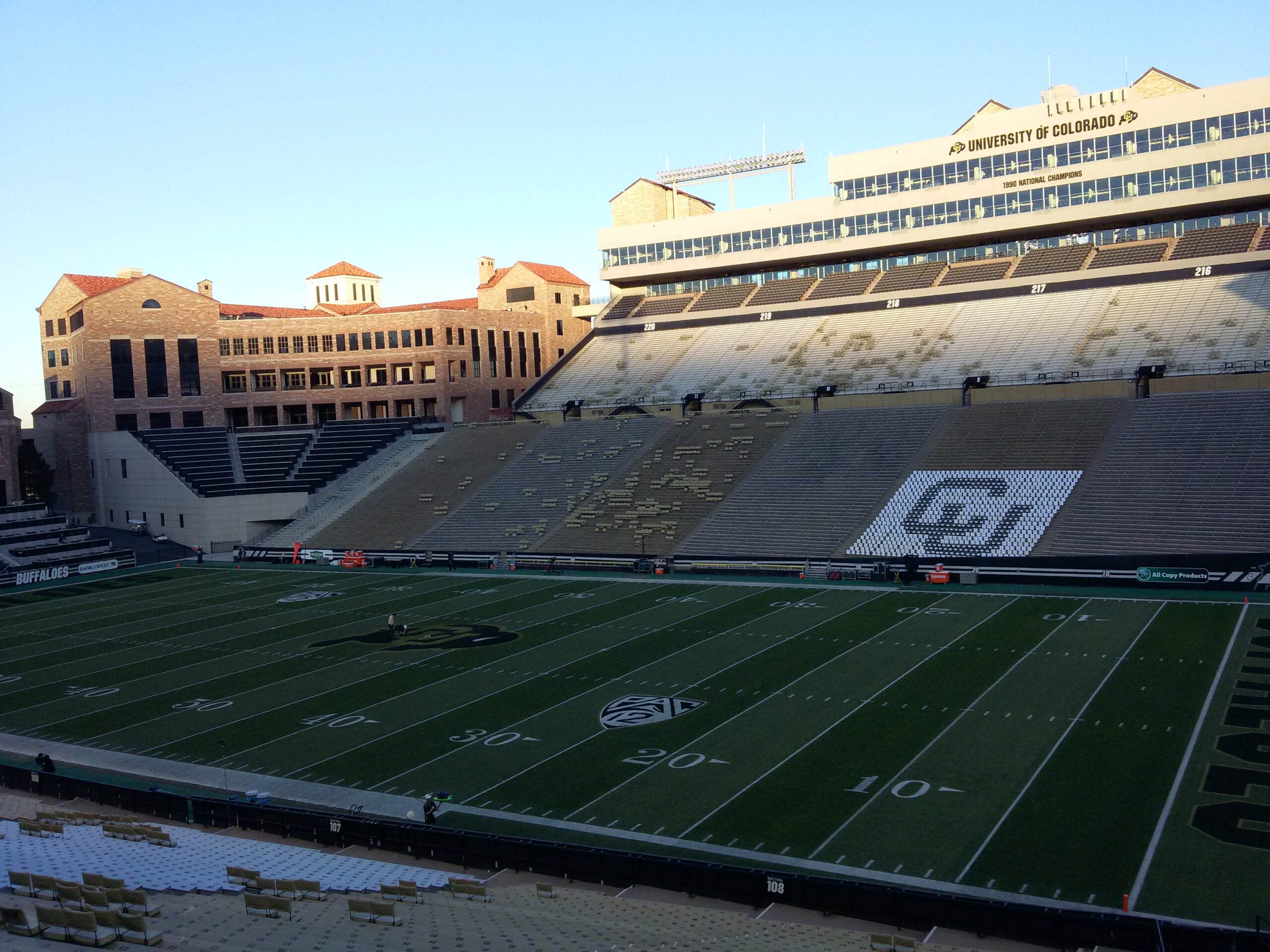
The indoor practice facility first dreamed of by Rick Neuheisel and Dick Tharp in the 1990s finally opened in time for spring practice in 2016. By then, it had been nine seasons since CU had been to a bowl game, and fifteen since they had won ten games. But that would turn out to be the season that the Champions Center was home to a team worthy of its name and its amenities.
Before the Buffs took the field that fall, Folsom hosted its first concert since 2001 when Dead & Company, an offshoot of previous repeat visitors the Grateful Dead, played two shows in July. It became an annual tradition, which reached its ostensible conclusion this past summer with three sold out performances on Independence Day weekend. I attended the final of these shows and it was a magical experience. Folsom is a spectacular concert venue, offering much closer proximity and better sightlines than most stadiums. With the October announcement that Tyler Childers will be playing Folsom in the summer of 2024, it looks like the days of Folsom being a (semi) regular concert venue again may be here at last.
Nothing, not even a rock show, can match the excitement level at Folsom Field when the Buffs are rolling, and 2016 would be a season like no other. “The Rise” started as a Twitter hashtag coined by CU co-offensive coordinator Darrin Chiaverini. It then became the title of a documentary series from CU’s video team that would play out almost like a Hollywood script during the autumn of 2016. By November 3rd CU was already bowl eligible at 6-2, and I was helping lay out hundreds of cards with my fellow student section leaders that would, if it all went right, spell it out loud and clear for a national television audience.
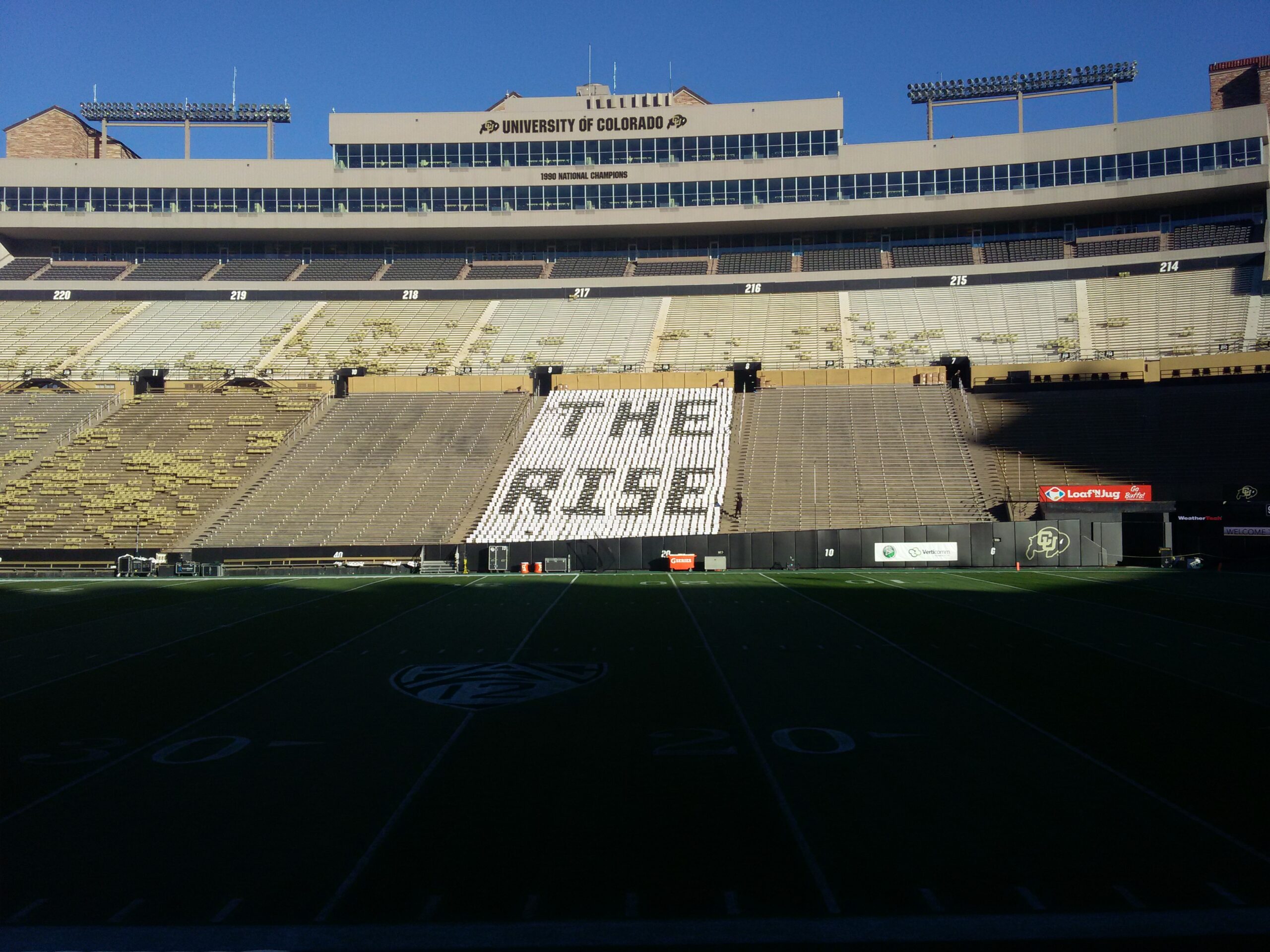
As a senior in college who hadn’t seen a good CU team since I was in elementary school, the 2016 season was the most special time in my life as a CU fan, and I doubt anything will ever top it. That team had stuck together through defeat after bitter defeat, and their ultimate success that year owed more to heart and determination than it did to raw talent (though it’s worth noting that the entire secondary went on to play in the NFL). The 2016 Buffs went undefeated at Folsom Field for the first time since 1994, and they won the Pac-12 South division title with an 8-1 conference record. Mike MacIntyre won national coach of the year honors, and it seemed like order had finally been restored to the universe.
In real life, unlike the movies, there are no happy endings. Despite the on-field turnaround and the state-of-the-art facilities, recruiting picked up at only a modest pace. Darrin Chiaverini managed to snag a true diamond in the rough with Laviska Shenault, who led the Buffs to a 5-0 start in 2018, but that team collapsed in spectacular fashion by dropping their final seven games, and MacIntyre was fired.
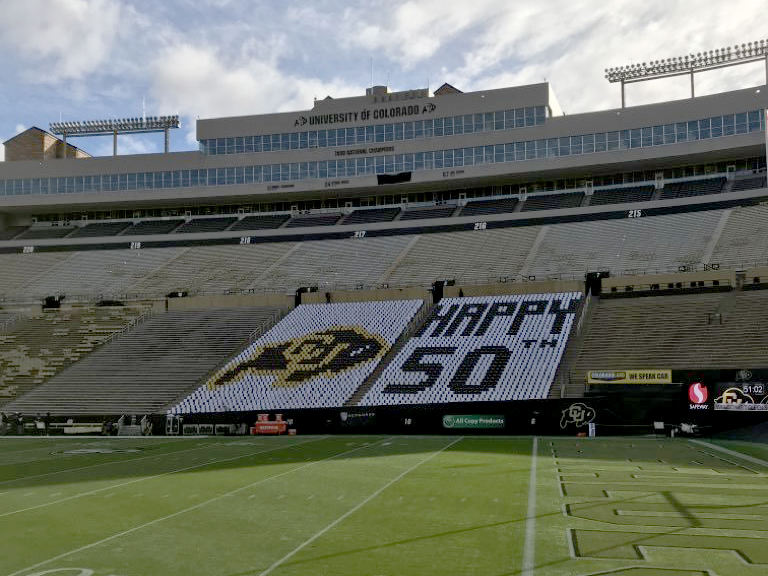
Rick George was now in a position to make his first head coaching hire after nearly six years on the job. Part of the hope with the Champions Center was that it would help attract not just top player talent, but top coaching talent as well. George wanted an energetic recruiter who could take full advantage of the facilities, and it appeared he had found his man in Mel Tucker. Four-star recruits started to commit, and energy around the program was high, despite Tucker’s 2019 squad finishing with the same 5-7 record as the year before. Then, just days after National Signing Day in February 2020, Tucker bolted for Michigan State. Karma is a five-letter word, and Midnight Mel got his eventually. It’s clear now that his departure was for the best, but it put CU in a tough spot.
After being turned down by Steve Sarkisian, George turned to former CU coordinator and UCLA head coach Karl Dorrell. The hire was criticized heavily and, after a mirage of a COVID-shortened 2020 season, the skeptics were right. Dorrell was a disaster, and the program was right back where it had been ten years earlier after a 1-11 campaign in 2022 when the average margin of defeat was 29 points. Many, the author included, questioned CU’s commitment to football, and whether Rick George had grown weary of the handcuffs placed on him by CU administration and seemed ready to take another job. Others felt he shouldn’t have been allowed to make the next head coach hire under any circumstances.
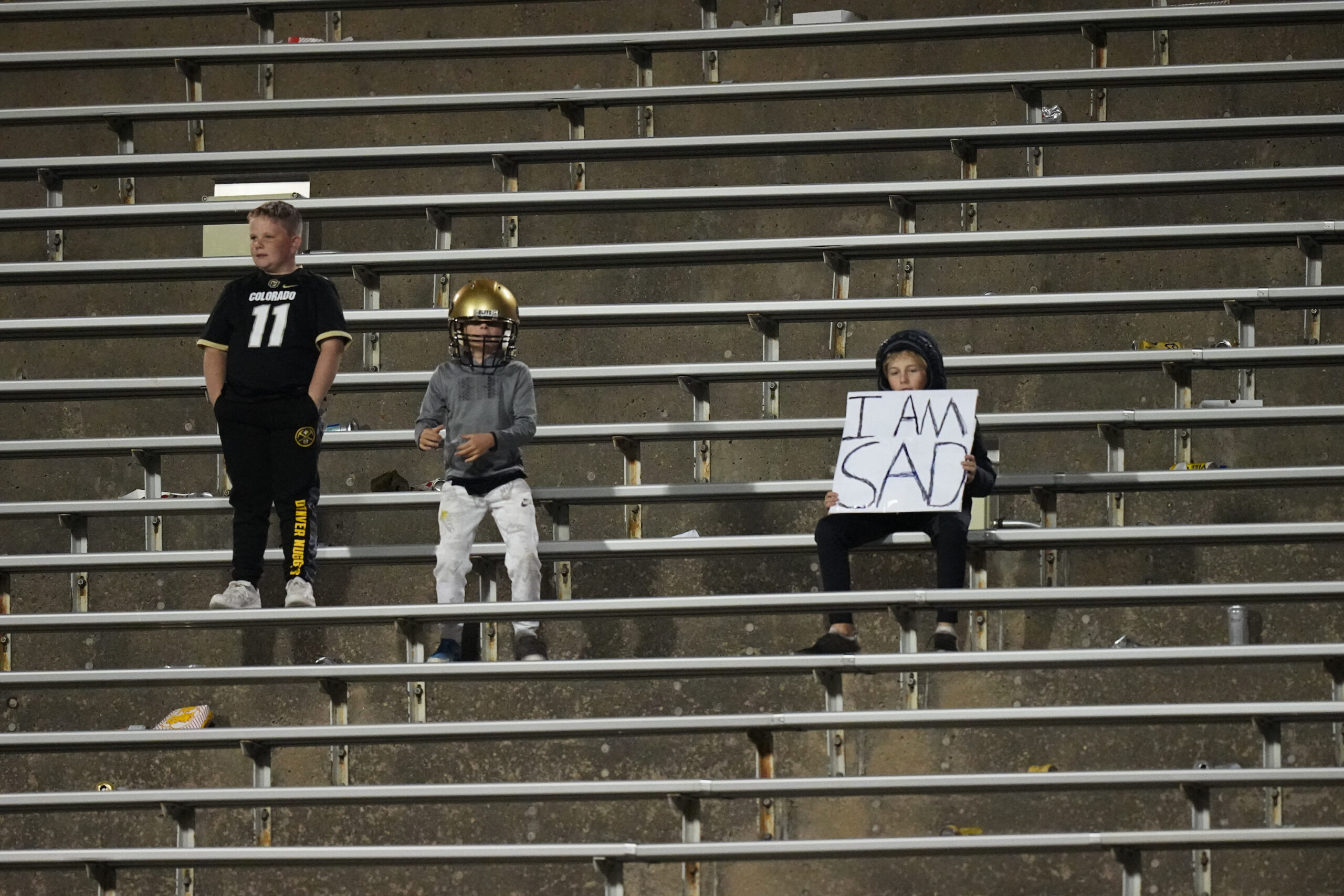
New CU president Todd Saliman proved to be the unexpected hero that Rick George and CU fans had been waiting for. He helped remove archaic academic restrictions and signaled that the success of the football program was of paramount importance to the University. He allowed George to swing for the fences, and the result was a grand slam.
It’s quite possible that no one other than Rick George would have been able to bring Deion Sanders to Boulder. I had always assumed that the first paragraph of his CU biography would be that he got the Champions Center built. Now I think it will read that he got the Champions Center built and used it to land the coach that brought CU back to national relevance.
The Buffs were something less than an afterthought in 2022, and in 2023 they have attracted more television viewers than any other school. For the first time in its one hundred seasons, Folsom Field has been sold out for every game. Even the spring game, held amidst inclement conditions, attracted a sellout crowd.
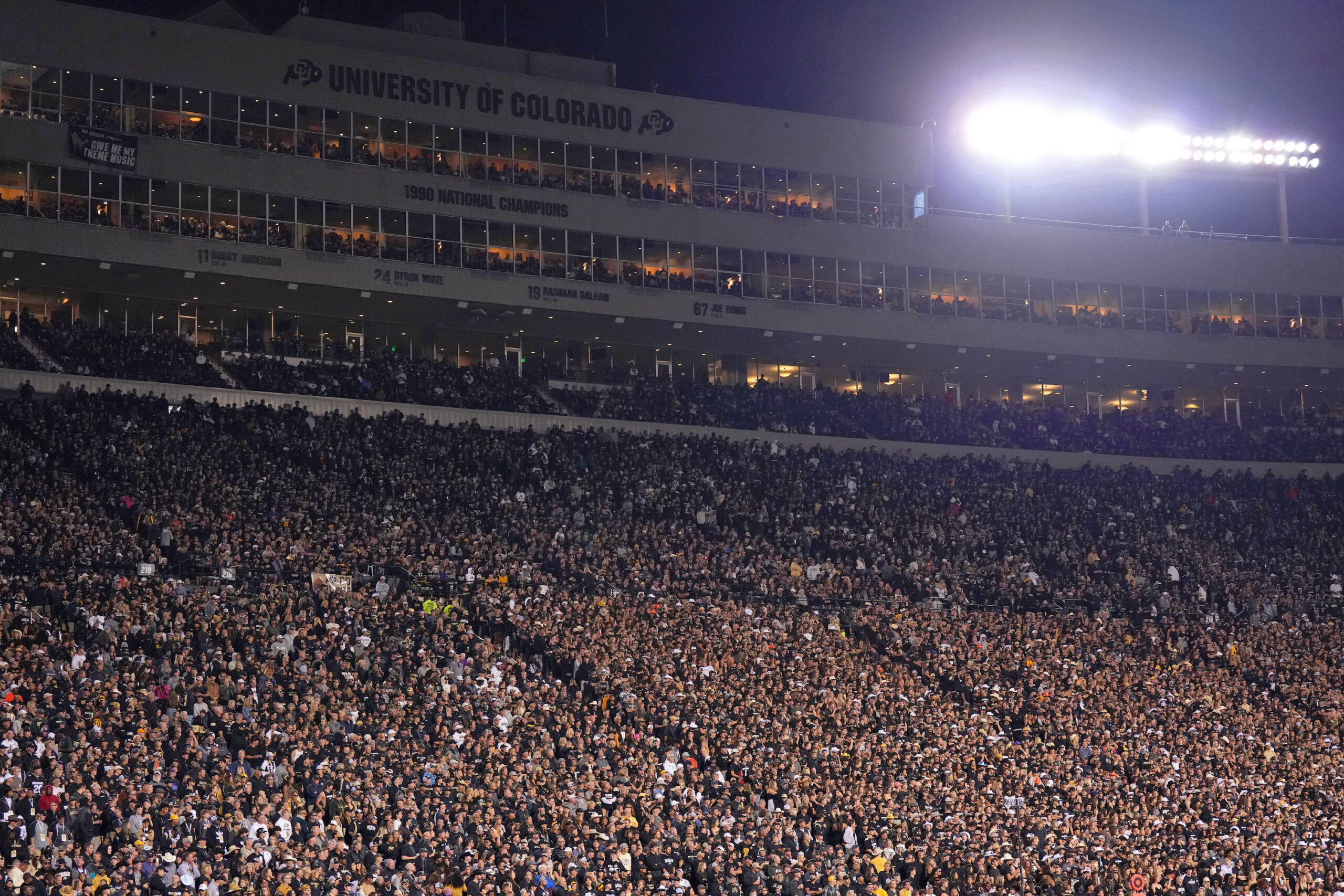
College GameDay came to Boulder for the first time since 1996 (they nearly did in 2016, and I’m still bitter about it) but they weren’t the only network pregame show in town. Fox brought Big Noon Kickoff to Farrand Field three times, including once when they weren’t even carrying CU’s game that week. A parade of celebrities like Dwayne “The Rock” Johnson and Lil Wayne, plus NFL legends like Michael Irvin and Terrell Owens, have all paid visits to Coach Prime and the Buffs. It’s been surreal, and one hell of a way to cap off Folsom’s first century.
Folsom’s 25 Greatest Games nominees from this chapter:
- November 19, 2016 vs. #22 Washington State – in the first top-25 matchup at Folsom in fourteen years, the 10th-ranked Buffs prove too much for the Cougs in a thrilling back-and-forth affair
- November 26, 2016 vs. #21 Utah – #9 CU clinches the Pac-12 South with a gritty 27-22 win over the Utes
- October 6, 2018 vs. Arizona State – Laviska Shenault scores all four touchdowns in a 28-21 win that gives the Buffs a 5-0 record
- September 7, 2019 vs. #25 Nebraska – one of the greatest comebacks in CU history. Trailing 17-0 late in the third quarter, the Buffs shock the Huskers in overtime 34-31, partially thanks to the greatest flea flicker in football history
- September 16, 2023 vs. Colorado State – a day where Folsom Field felt like the gravitational center of the universe, with both ESPN College GameDay and Fox Big Noon kickoff on campus. Lil Wayne led the Buffs out of the locker room before the game. CU unexpectedly trailed most of the way before Shedeur Sanders engineered a miraculous 98-yard drive in under two minutes, plus a two-point conversion, to send the game to overtime. CU eventually prevailed 43-35 in double OT in a game that drew more than 9 million viewers despite finishing after 2 AM eastern time.
Epilogue:
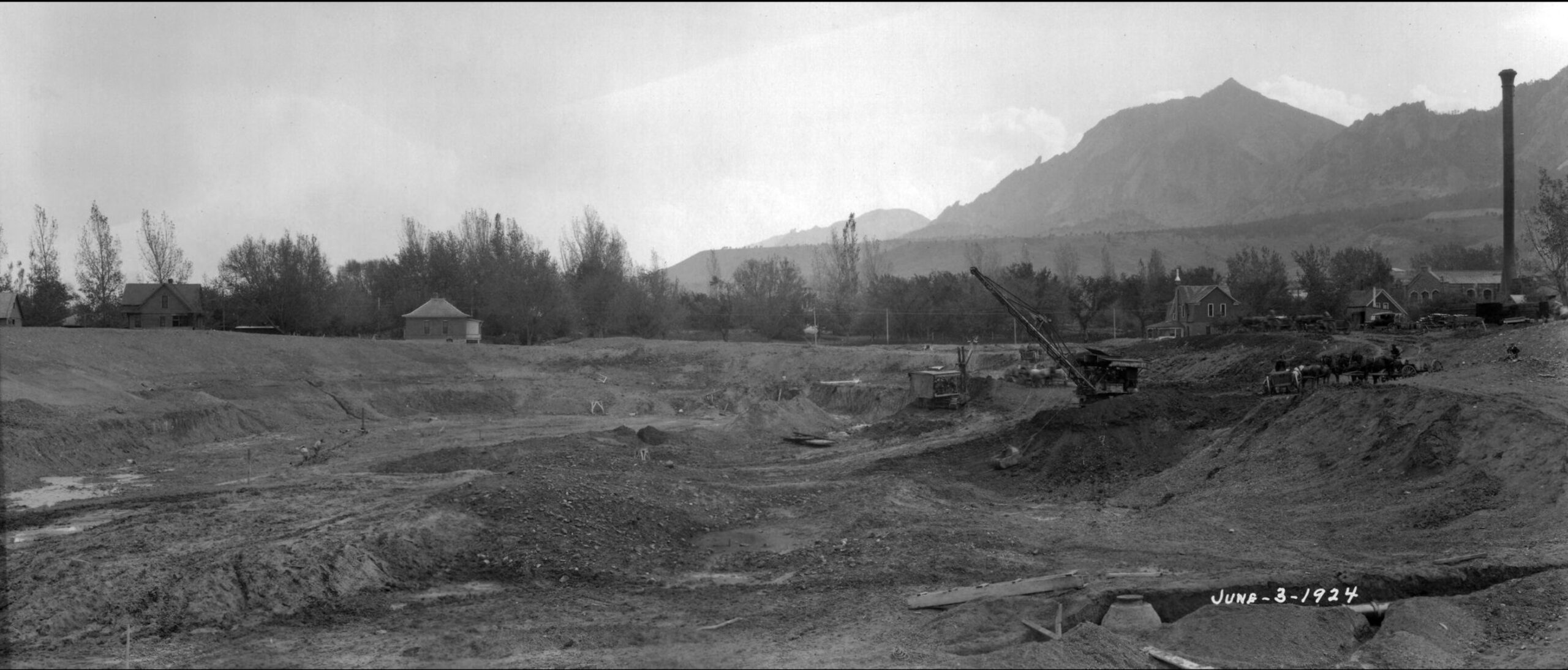
This is not the end of Folsom’s story. New chapters will be written – starting next season, when it will celebrate its 100th birthday as the center of the college football world once again. Beyond that, the future is difficult to predict. One certainty is that Folsom Field will continue to evolve. On the day I finished writing this article, renderings of new video boards for the south end zone were announced by the athletic department. Behind the scenes, there are already plans to reimagine the stadium’s west side, which will require a complete renovation of Balch fieldhouse.
An old college football stadium is something like the Ship of Theseus. Parts get replaced as they wear out, and no material from Folsom’s original construction remains today. Yet a time traveler from the year 1924 would no doubt be able to recognize that this is the very same stadium where they saw their beloved Colorado football team trounce Utah and the school from Fort Collins. The curvature of the stands is the same today as it was then. So is the view. When you’re sitting on the east side of Folsom looking towards the mountains, there’s no way you could mistake it for any other place on earth.
It’s easy to dismiss a stadium as just a utility – a bunch of bleachers surrounding a patch of grass. To me that’s like saying a church is just a building with a pointy roof. A stadium that has endured longer than most human lives contains the emotional memory of the millions of people who have experienced intense excitement, frustration, pain and joy within its walls. It’s a place that thousands of university alumni make a pilgrimage to each year – the thing that keeps them rooted in a community where they no longer reside. We call that pilgrimage “homecoming”, and it’s an apt word. When I’m inside Folsom Field, I feel like I’m home.
While I can’t predict what Folsom will look like at the end of its second century in the year 2123, I have faith that it will still be here, and that its story is only beginning. In the first chapter of this series I compared Folsom Field to the Panathenaic Stadium in Greece. That marble wonder hosted games for centuries, before being abandoned for nearly 1500 years. Like Folsom, it was built into a natural ravine, which helped it survive earthquakes and the strains of time, and in the 19th century archaeologists excavated the site. After years of renovation, it hosted the opening ceremonies of the first modern Olympics in 1896. More than a hundred years after that, it served as the finish line for the 2004 Olympic marathon. A century is just one chapter in its story.
Sometimes I daydream about the children of a future civilization discovering some stone steps poking out of the earth and excitedly running to tell their parents about what they’ve found. On a beautiful fall day several years later, the parents sit in the excavated grandstand watching their children, now young adults, play a game on the grass below. As their gaze drifts from the field to the mountains beyond, they wonder about the people who built this place, and what life was like in those ancient times when it was new. On the open plains next to the stadium, a herd of buffalo passes by.
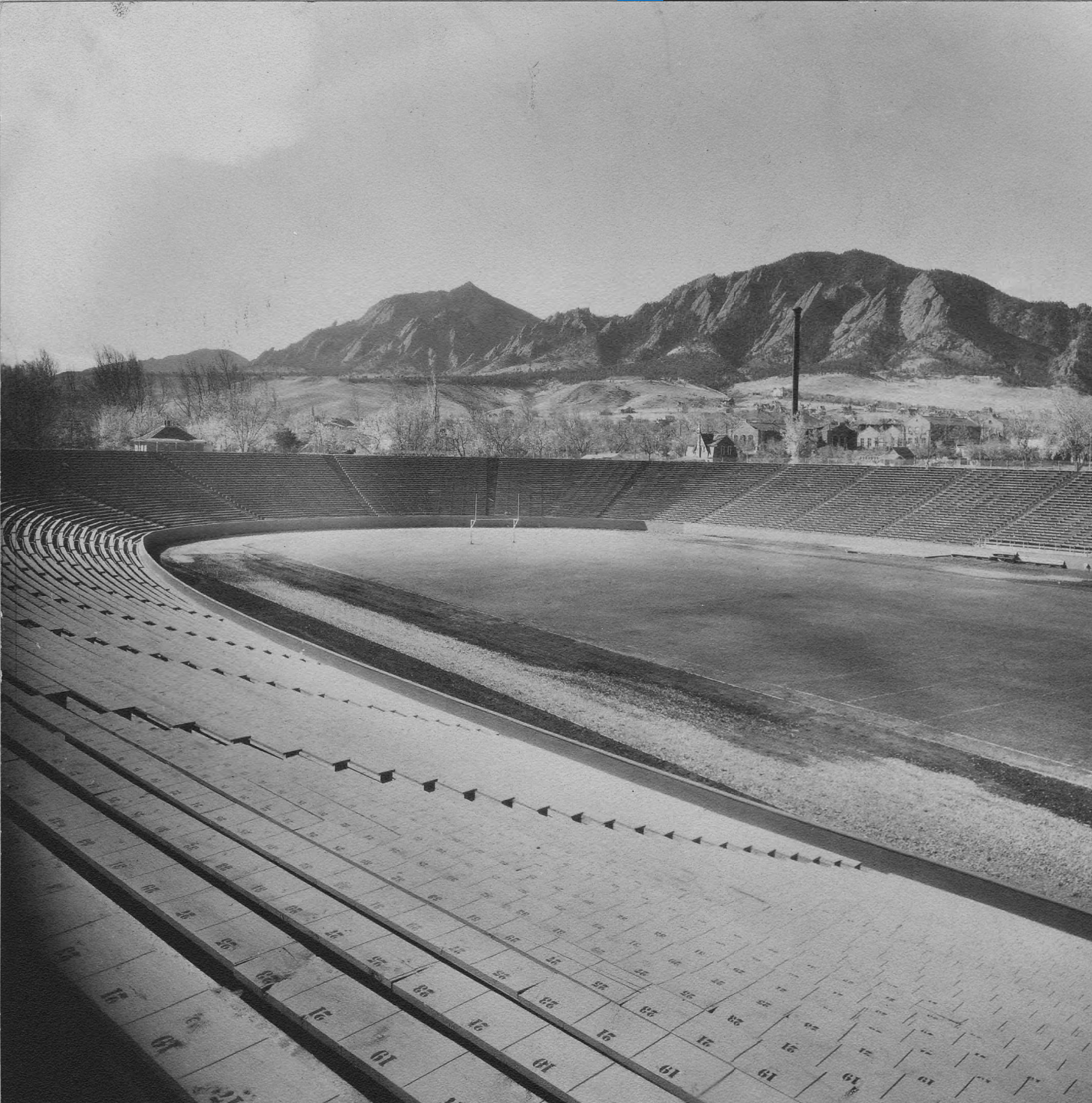
Comments
Share your thoughts
Join the conversation

The Comment section is only for diehard members
Scroll to next article















